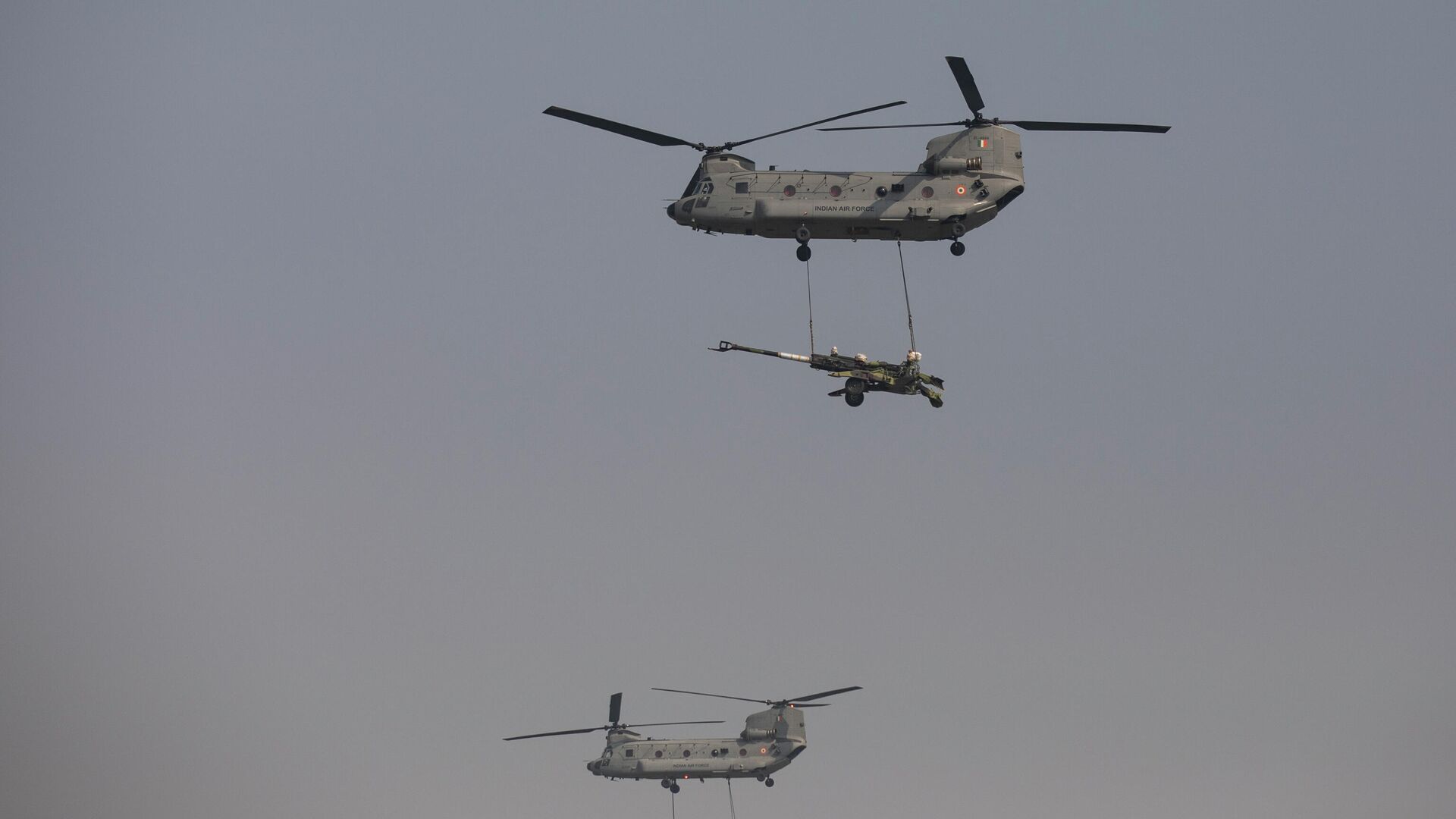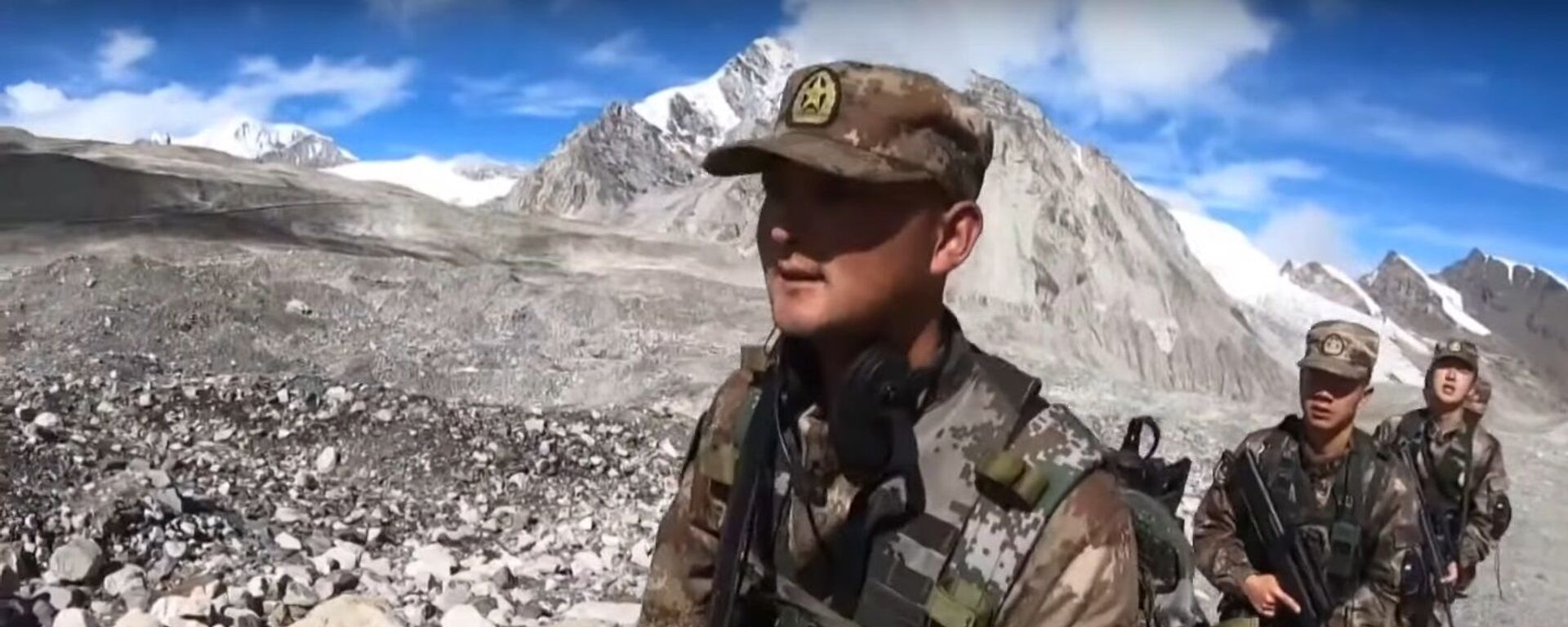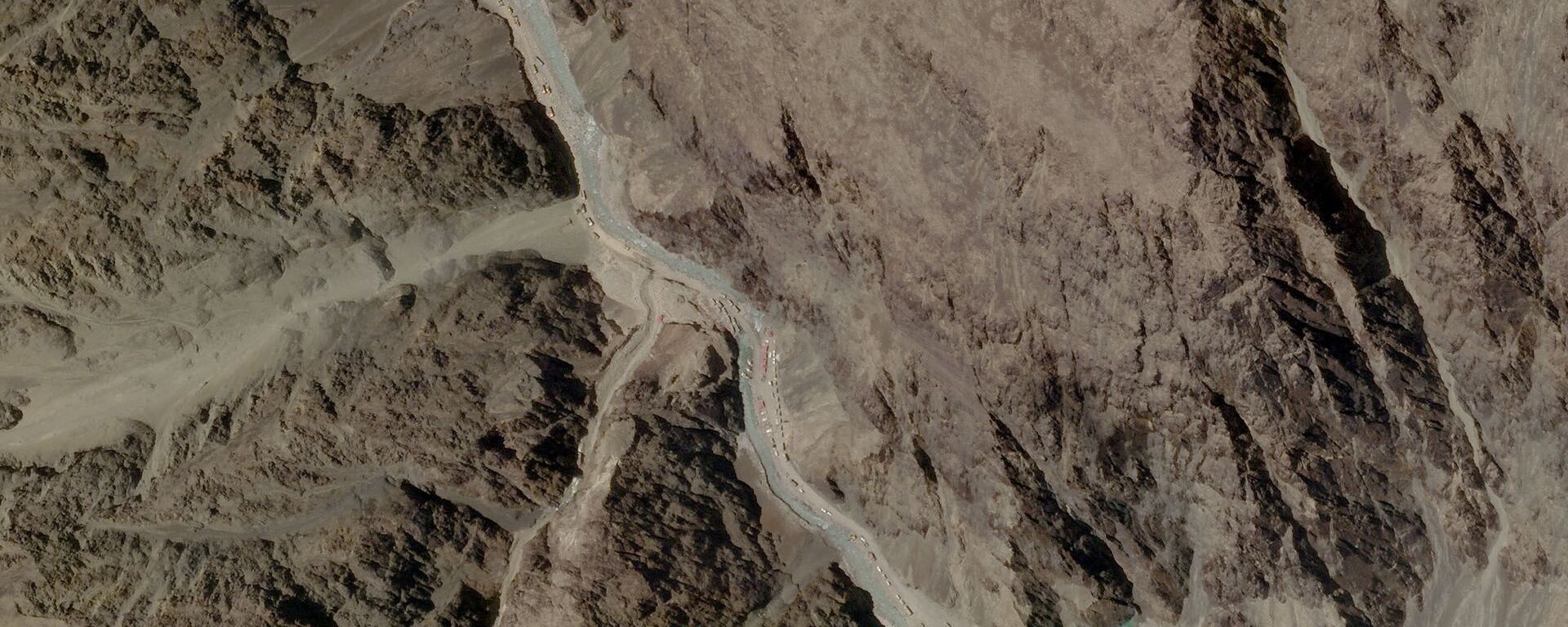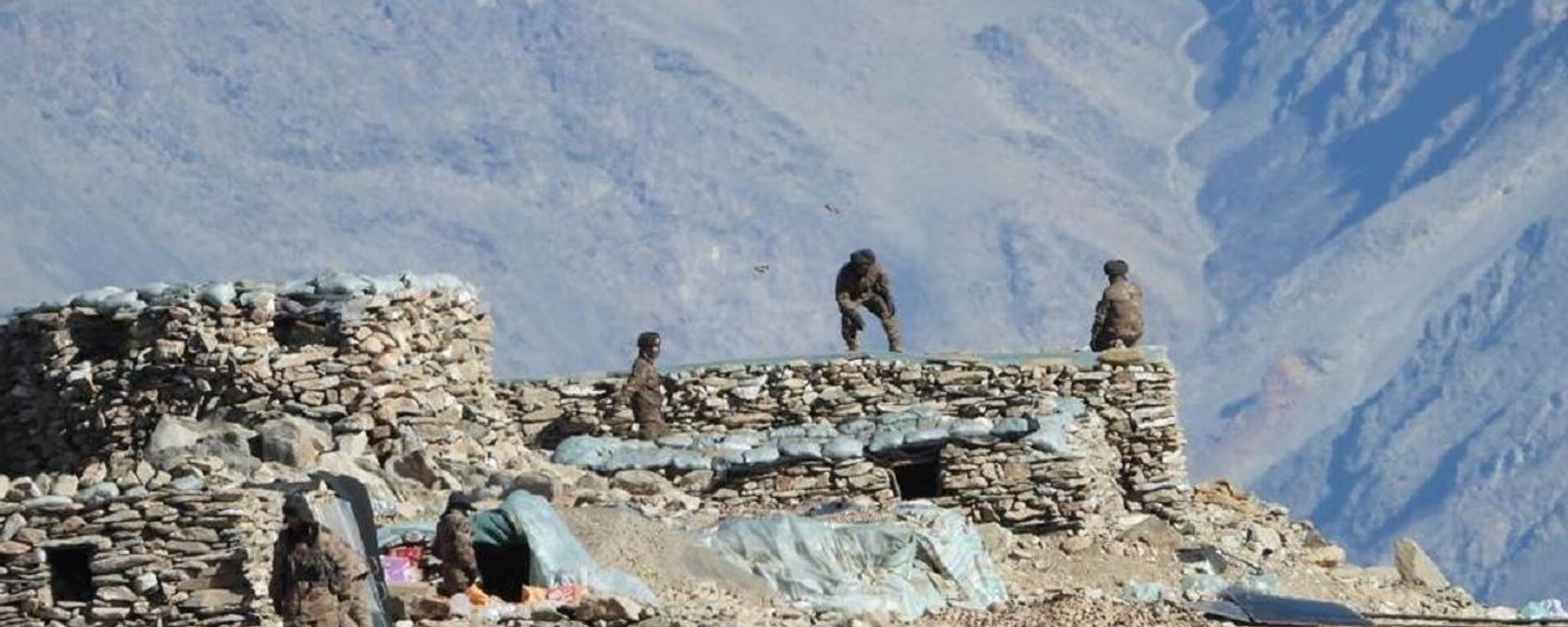India Deploys US Weapons, Including Chinook Helicopters, to Ramp Up Defence at Disputed China Border

© AP Photo / Altaf Qadri
Subscribe
India has increased its defence purchases from the US over the last five years, buying about $3.4 billion worth of armaments between 2016 and 2020. The country was designated as a “major defence partner” of the US in 2016. In 2018, the US granted it “license-free access” to a range of military and dual-use technologies that are otherwise regulated.
India has been bolstering its defence capabilities with recently-acquired American weapons in areas adjacent to the eastern part of China's Tibetan Autonomous Region (TAR), which borders the north-eastern part of the country.
The military build-up in India's north-eastern region has seen India bring in US-manufactured Chinook helicopters, ultra-light towed howitzers and rifles, domestically-made supersonic cruise missiles and a new-age surveillance system, a Bloomberg report said on Friday.
The advanced weaponry is being commanded by the newly-raised Mountain Strike Corps, an offensive unit of the Indian Army under the Eastern Command.
Lieutenant General Manoj Pande, the head of the Indian Army’s Eastern Command, has expressed confidence in the army’s “military preparedness” in dealing with any eventuality on China's border.
The military build-up in India's north-eastern region has seen India bring in US-manufactured Chinook helicopters, ultra-light towed howitzers and rifles, domestically-made supersonic cruise missiles and a new-age surveillance system, a Bloomberg report said on Friday.
The advanced weaponry is being commanded by the newly-raised Mountain Strike Corps, an offensive unit of the Indian Army under the Eastern Command.
Lieutenant General Manoj Pande, the head of the Indian Army’s Eastern Command, has expressed confidence in the army’s “military preparedness” in dealing with any eventuality on China's border.
He also confirmed an increase in the deployment of satellites, long-range unmanned aerial vehicles, intelligence, surveillance, and reconnaissance (ISR) systems and other capabilities by India at the Arunachal Pradesh border in recent months.
A major part of the 3,488-kilometre-long Line of Actual Control (LAC) between India and China falls under the jurisdiction of the Eastern Command.
Most of the build-up of weaponry is focused in the Tawang Plateau of Arunachal Pradesh, a region administered by New Delhi but claimed by Beijing as part of Tibet.
According to an Indian media report, PLA troops came face-to-face with Indian border guards at the Arunachal border this month before returning to their base - or bases - in the Tibetan Autonomous Region (TAR).
China earlier this month also raised objections to the visit of Indian Vice President M. Venkaiah Naidu to Arunachal Pradesh, as it warned New Delhi against taking any action that would “complicate and expand the boundary issue”.
Indian military commanders have pointed out that the north-eastern region is of “critical importance” to the nation. A narrow strip of land known as the Siliguri Corridor, around 50 kilometres in length, connects the region to the rest of the country.
The region borders Bhutan, Nepal, Bangladesh and Myanmar. In 2017, the Indian Army crossed over to Bhutan to stall a road-construction project launched by China near the Doklam Plateau.
New Delhi fears that the presence of the People’s Liberation Army (PLA) on the Doklam Plateau, lying at the tri-junction of three countries, would put the Siliguri Corridor within firing range of Chinese weapons in the event of hostilities.
Not only has New Delhi been upgrading its military capabilities, it has also been speeding up the construction of critical infrastructure in Arunachal Pradesh.
Indian Defence Minister Rajnath Singh on 14 October presided over the "breakthrough blast (an event marking the end of excavation operations)" on the main tube of the under-construction Sela Tunnel, an all-weather connectivity project in Arunachal Pradesh.
The two-lane road tunnel will be the highest in the world, at an altitude of over 13,000 feet (about 4,000 metres), and would reduce the time taken to reach Tawang (on China's border).
India’s military build-up and the infrastructure upgrade along its north-eastern borders was only accelerated by the eruption of a border standoff in the Ladakh region last year.
Ladakh UT lies in India’s north; the military operations there are overseen by the Indian Army’s Northern Command.
Thirteen rounds of military commander-level talks and several rounds of diplomatic parleys between the two nations have failed to completely resolve the dispute, which turned deadly last year after troops from both the sides clashed in the Galwan Valley.
The incident, which was the deadliest along the India-China border in over four decades, resulted in the death of 20 Indian and four Chinese troops.
China’s New Land Boundary Law
India has also strongly reacted to Beijing’s new ‘Land Boundary Law’, which was reportedly passed by the National People’s Congress on 23 October.
According to Xinhua News Agency, the new law calls upon the state to “take measures to safeguard territorial integrity and land boundaries” and “to strengthen border defence, support economic and social development as well as opening-up in border areas, improve public services and infrastructure in such areas, encourage and support people’s life and work there, and promote coordination between border defence and social, economic development in border areas”.
According to Xinhua News Agency, the new law calls upon the state to “take measures to safeguard territorial integrity and land boundaries” and “to strengthen border defence, support economic and social development as well as opening-up in border areas, improve public services and infrastructure in such areas, encourage and support people’s life and work there, and promote coordination between border defence and social, economic development in border areas”.
Indian Foreign Ministry spokesperson Arindam Bagchi said on 27 October that the new law will have an “implication on our existing bilateral arrangements on border management as well as on the boundary question”, which remains unresolved.
“We also expect that China will avoid undertaking action under the pretext of this law which could unilaterally alter the situation in the India-China border areas,” stated the Indian official.
“We also expect that China will avoid undertaking action under the pretext of this law which could unilaterally alter the situation in the India-China border areas,” stated the Indian official.



